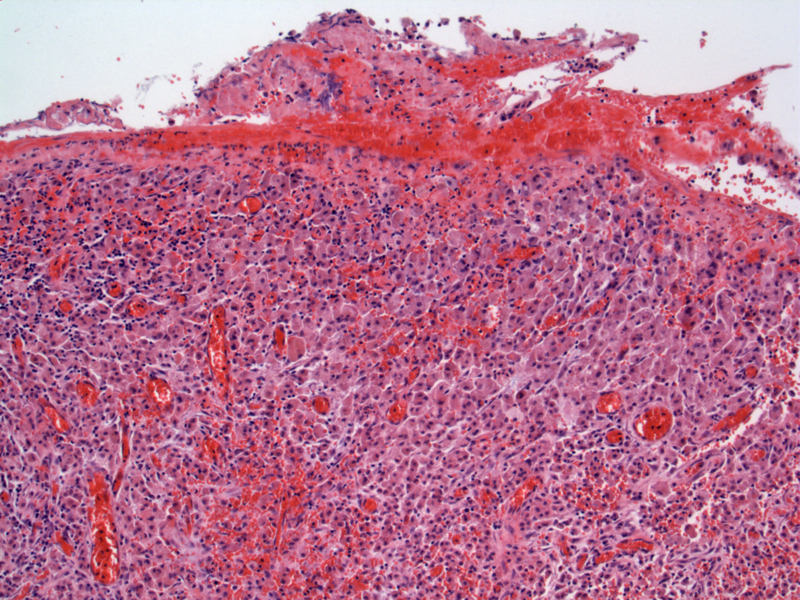

The gallbladder surface is eroded and there is secondary hemorrhage. Mucosal ulceration and bile extravasation are thought to be the underlying cause of this unusual process.
Irregular dense fibrosis alternates with confluent areas of mixed chronic inflammation with a histiocytic predominance.
The inflammatory process is exuberant, and may even infiltrate out into the surrounding adipose tissue. Xanthogranulomatous cholecystitis can not only be infiltrative but also destructive locally.
Among the xanthomatous cells are scattered multinucleated giant cells in various numbers.
Xanthogranulomatous cholecystitis starts as an acute inflammatory process followed by a granulomatous reaction and then a cellular-type immunologic response. In such ways, it resembles xanthogranulomatous pyelonephritis, in which chronic infection and calculi are common findings.
Average age is mid 50s. In about 15% of cases, the radiological impression is suspicious for carcinoma. The relation to cholelithiasis is high, from 95% to 100%.
Firm adhesions of the gallbladder to adjacent tissues are common and lead to difficulty in surgical treatments. As such, there is a relatively high rate of conversion from laparoscopic to open cholecystectomy.
• Gallbladder : Follicular Cholecystitis
• Gallbladder : Choledocholithiasis
• Kidney : Xanthogranulomatous Pyelonephritis
Yang T, Zhang BH, Zhang J, Zhang YJ, Jiang XQ, Wu MC. Surgical treatment of xanthogranulomatous cholecystitis: experience in 33 cases. Hepatobiliary Pancreat Dis Int. 2007 Oct;6(5):504-8.